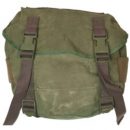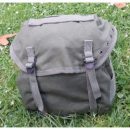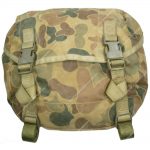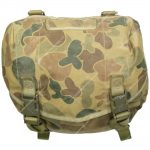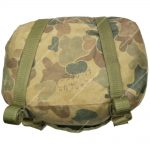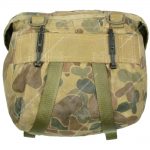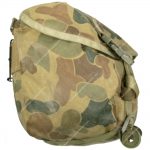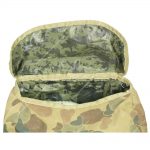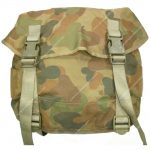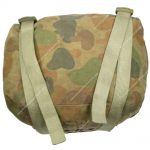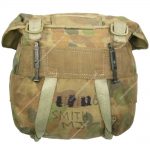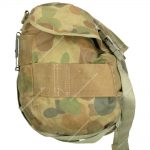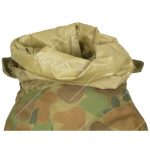Field Pack, Combat
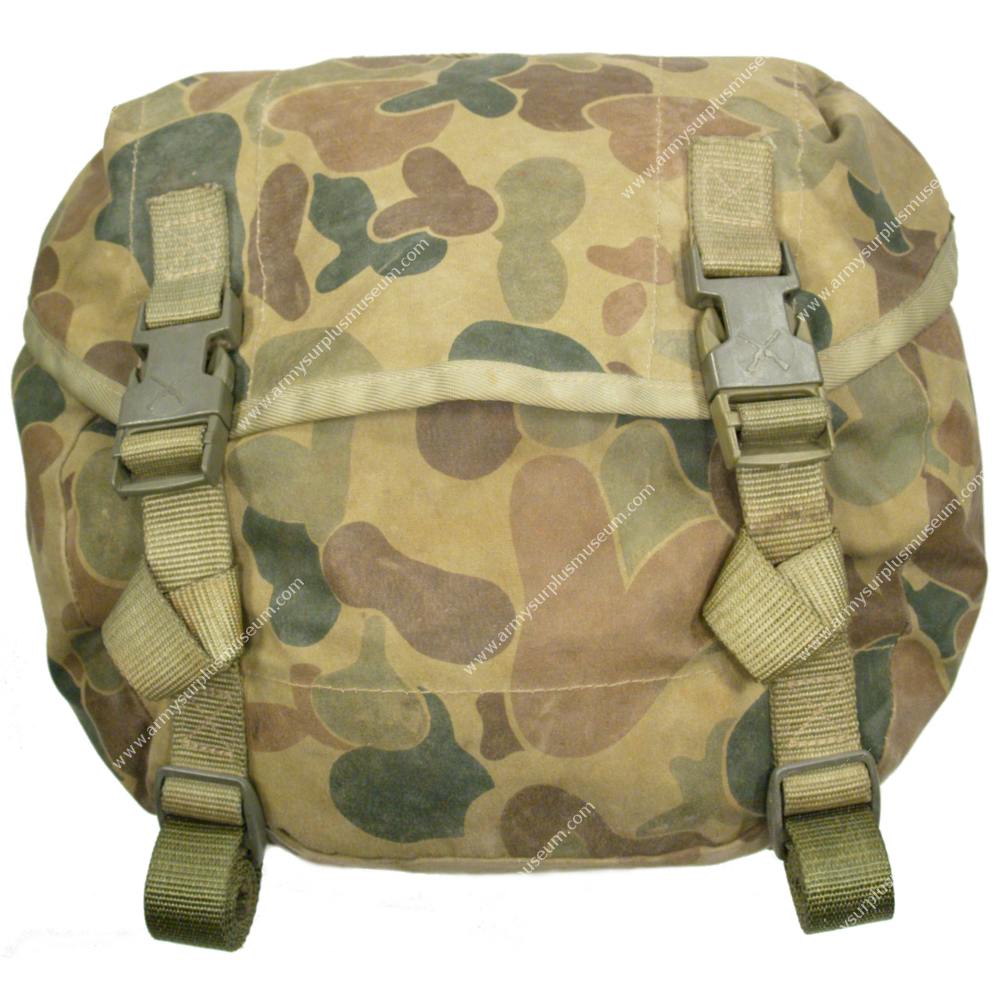
General Information
Name: Field Pack, Combat.
Country of Origin: Australia.
NATO Stock Number (NSN): 8465-66-130-1284.
Camouflage Pattern: Disruptive Pattern Camouflage Uniform (DPCU), Auscam.
Equipment Family: M-1988 Individual Combat Load Carrying Equipment (ICLCE).
Volume Capacity: 10-12L.
Weight: 350gms.
Waterproof: Yes, but depends on the condition of the fabric.
For more specific details such as date of production and manufacturer see individual examples.
Similar Objects
History
The Field Pack, Combat (Butt Pack) is a small pack that was issued by the Australian Defence Force (ADF) with the M-1988 ICLCE system. The Butt Pack is fitted to the back of the M-1988 ICLCE web belt and the web suspenders are fitted to the top of the Butt Pack. The Butt Pack could be worn by itself with the aid of a shoulder strap and also fitted to the M-1988 Field Pack.
With the Butt Pack, the ICLCE web set could hold enough equipment for roughly 12hrs. As well as storing equipment on the internal side, the base of the Butt Pack has two webbing straps that secure rolled up clothing items under it. The sides have webbing loops that enable other components of the M-1988 ICLCE system to be fitted to the Butt Pack.
Aside from Example One the majority of the Butt Packs issued with the M-1988 ICLCE were the same style as the last Butt Pack iteration issued with the M-1956 (AUST) system, except they were produced in Auscam fabric.
Most soldiers used the Butt Pack as it was, but some modified it: making it sit lower, reinforcing the back lip and trying to make it less bulky as well as other modifications. In some cases, soldiers just replaced Butt Pack with a couple of Minimi Pouches.
Description
The butt pack is fabricated from a blend of cotton and polyester duck fabric, featuring a printed DPCU pattern. Its lid includes a vinyl transparent ID window and secures shut with two webbing straps and plastic side-release buckles.
Attached to the back of the Butt Pack, near the top, are two plastic D-rings. Below these, a webbing strap is sewn in place, equipped with a slide keeper on each side to fasten the butt pack to a web belt.
At the base of the Butt Pack, two webbing straps are present, each adjustable with plastic ladder lock buckles that are sewn to the bottom ends of the lid’s closure straps.
Examples
Example One
This is an example of the Butt Pack manufactured in 1989, by an unidentified manufacturer. It sets itself apart from later versions through its fully enclosed design, featuring a polyurethane (PU) laminated nylon tub that is sewn into the internal side. Additionally, the side loops designed for web pouches have been omitted from this version.
As an early production model, it utilizes the remaining stocks of PU nylon and olive green plastic buckles that were left over from the M-1956 (AUST) system. The pack is equipped with 25-mm nylon webbing straps, notable for their coarser weave.
Weight: 350g.
Object Number: 2435-360-35102.
Example Two
This example of the Butt Pack was manufactured in 1990 by Witant PLY, LTD. In a departure from Example One, this version returns to the ‘classic’ Butt Pack design, reintegrating the polyurethane (PU) laminated nylon snow collar and side loops for web pouches into its structure.
This choice to revert to the older snow collar design could have been influenced by the fact that the internal tub concept introduced in Example One wasn’t robust enough to endure the wear and tear experienced during field use.
Weight: 350g.
Object Number: 2435-360-35103.

